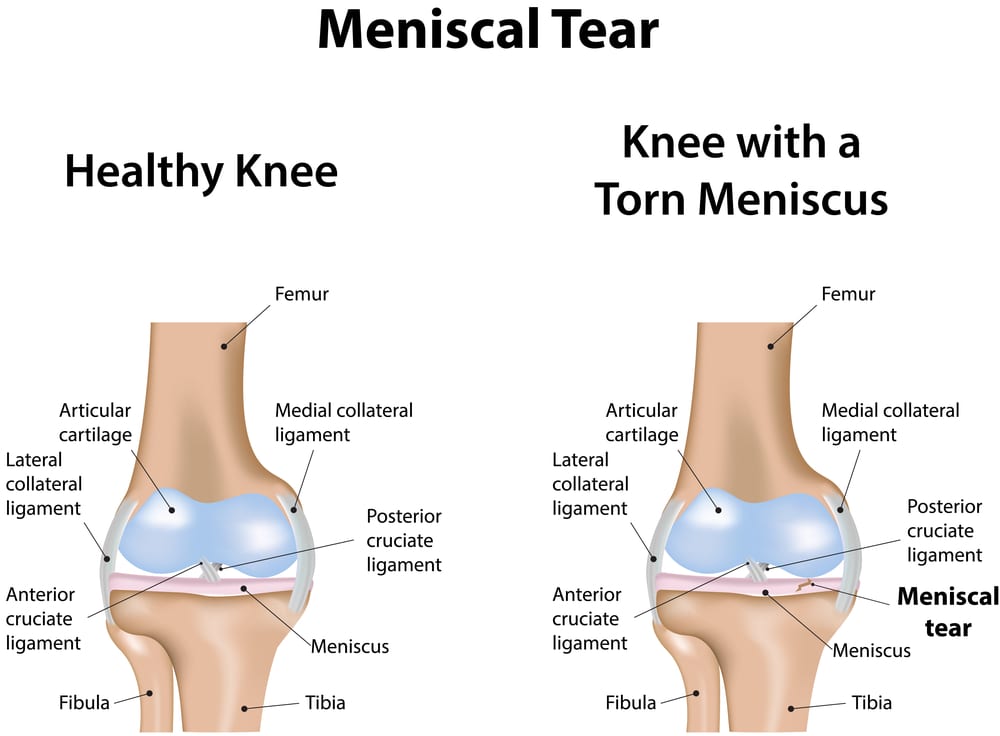The meniscus is made of strong cartilage and is found in the knee joint between the bone ends of the femur (thigh bone) and tibia (shin bone). The function of the meniscus is to absorb shock, cushioning the impact of the femur on the tibia during weight-bearing activities. Normally the surface of the meniscus is smooth allowing friction free movement of the femur on the tibia. The meniscus however can become torn or damaged due to excessive weight bearing or twisting forces.

What are the symptoms of a meniscal tear?
Patients often experience a sudden, sharp pain within the knee at the time of injury. Swelling often occurs in the days following the injury. After the injury, pain is typically exacerbated with weight bearing activities and twisting movements of the knee. The knee may feel weak or unstable and may click, lock or give way during certain movements.
How can physiotherapy help?
Physiotherapy treatment for a meniscal tear is essential to ensure a full recovery. Treatment may include soft tissue massage, mobilisations (joint stretching), activity modification advise as well as exercises for strength and flexibility. When the meniscal tear is severe or will not heal efficiently with non-invasive physiotherapy treatment, we may recommend you to see a sports physician or orthopaedic surgeon. Physiotherapy then becomes important to guide post-surgery rehabilitation. Our therapists can assist to reduce pain, reduce swelling, increase strength of surrounding muscles and increase range of motion at the knee joint.
